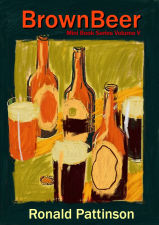I'm still having a good chew of this article. And will spit out the odd post, to the disgust of everyone, doubtless.
I'm particularly interested in the beers from India. As it gives some indication of the local competition British brewers faced in the Indian market.
| Indian samples | |||
| Exhibitors | Country | Samples | Style |
| E. Dyer and Co., Lucknow | India | Pale Ale No. 1 | Pale Ale |
| E. Dyer and Co., Lucknow | India | Pale Ale No. 2 | Pale Ale |
| E. Dyer and Co., Lucknow | India | Pale Ale No. 3 | Pale Ale |
| E. Dyer and Co., Lucknow | India | XX. Stout No. 1 | Stout |
| E. Dyer and Co., Lucknow | India | XX. Stout No. 2 | Stout |
| E. Dyer and Co., Lucknow | India | XX. Stout No. 3 | Stout |
| E. Dyer and Co., Solan | India | India Pale Ale. | IPA |
| E. Dyer and Co., Solan | India | Stout | Stout |
| Meakin and Co, Kasanli | India | XXX Stout | Stout |
| Meakin and Co, Kasanli | India | Pale Ale | Pale Ale |
| Source: | |||
| The Brewers' Journal vol. 38 1902, November 15th 1902, page 672 - 674. | |||
In the traidition of the random use of the term IPA, two of the Indian brewers simply called their beers Pale Ales. Despite having an excellent claim to the prefix India. While the other did plump for IPA. Note that there are as many examples of Stout as Pale Ale.
India.— Among the samples of ale (top fermentation) the India pale ale of Messrs. E. Dyer and Co., Solan, was decidedly the best. It was a brilliant full-drinking beer, and is awarded three marks. Next in order of merit, though decidedly inferior to the last brand, should be mentioned the pale ale No. 3, of Messrs. E. Dyer and Co., Lucknow. It is awarded two marks.
The XX stout, No. 3, of Messrs. E. Dyer and Co., Lucknow, is awarded three marks as the best brand exhibited from India, while the XXX stout of Messrs. Meaking and Co., Kasanli, is also given three marks; the sample tested was not quite so good as that of the first-mentioned brand.
The Brewers' Journal vol. 38 1902, November 15th 1902, page 672 - 674.
I would have guessed that the numbered beers from Dyer of Lucknow were in descending order of strength, in the manner of Bass. But with the No. 3 of both the Pale Ales and Stouts scoring well, I suspect that it's the other way around. With No. 3 the strongest.
It seems that they were quite good at making Stout in India. With two of the three top scores going to Stouts.
We now switch continents to Africa.
| Egyptian samples | |||
| Exhibitors | Country | Samples | Style |
| Brasserie des Pyramides | Egypt | Pilsen (non-Pasteurised) | Pils |
| Brasserie des Pyramides | Egypt | Pilsen (Pasteurised) | Pils |
| Brasserie des Pyramides | Egypt | Munich (non-Pasteurised) | Münchener |
| Brasserie des Pyramides | Egypt | Munich (Pasteurised) | Münchener |
| Source: | |||
| The Brewers' Journal vol. 38 1902, November 15th 1902, page 672 - 674. | |||
Egypt— These samples arrived too late for the Exhibition. The non-Pasteurised Pilsen of the Brasserie des Pyramides was a very fair beer in good condition. It is awarded three marks. The Pasteurised beer of the same brand is awarded two marks. The flavour was injured by the Pasteurising. Two samples of Munich beer (Pasteurised and non-Pasteurised) from the same brewery were also tested. The Pasteurised beer is awarded two marks. It was a fair beer, brilliant, and in good condition, but rather sweet. The sample of non-Pasteurised beer of the same brand was not so good.
The Brewers' Journal vol. 38 1902, November 15th 1902, page 672 - 674.
Can you imagine what a nightmare it must have been to coordinate the arrival of all these samples from around the world? The Japanese and Australian beers would have been months in transit. I assume that it was partly arranged by telegram. Probably a bit too early for it to be all by telephone. How we take instant communication for granted now.
Interesting that the unpasteurised Pils was good, while the unpasteurised Munich was crap. Was it a difference in the age of the samples, perhaps? Or maybe their bottling was a bit hit and miss.











































































1 comment:
Munich lager was probably not as well hopped as Pilsner lager.
Oscar
Post a Comment